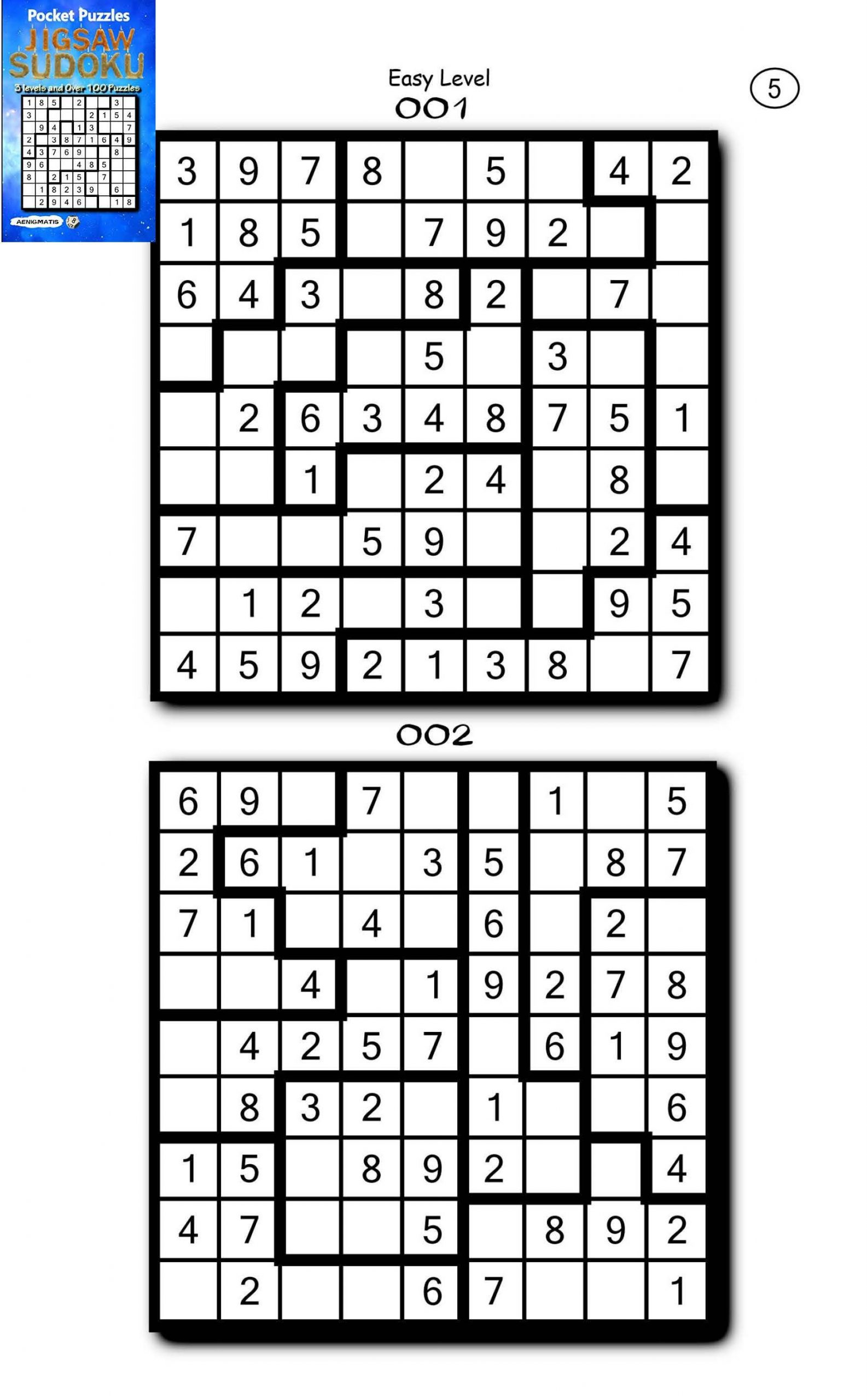

#JIGSAW SUDOKU HOW TO#
The hardest part is figuring out when and how to apply the techniques to jigsaw Sudoku. We may now delete 4,8 from all the other squares in row four, enabling the 8 to be inserted in row 5 and the 4 and 8 to be inserted precisely in row 4. We may exclude 4,8 as possible options from all other squares in row 4 this indicates that the 8 can now be inserted in row five, allowing us to arrange the 4 and 8 precisely in row four. 6, the candidates for those cells are the following: 137, 37, and 17.Īs a result, we can say that R4C5 and R4C6 must be 4 and 8, respectively, and we can indeed mark 48 as the pencil marks in those boxes. This leaves 1, 3, 7, which should be inserted in cells numbered 4, 5, 6 of row 6. The 5 in row 6 can alternatively be placed immediately. Using the simple logic, we can immediately place the ‘6’ in row six, and it pays rewards to take the time at the beginning of the problem to hunt for digits that must go in a certain cell in a row, column, or box. Sudoku and making significant eliminations. Looking for implementations of this technique at the beginning of the puzzle can be the key to swiftly inserting values in the jigsaw. This leaves only one cell in row 1 that can hold the one, and that is the last cell, R1C9, that we place it in. This leaves only three boxes in row 1 that possibly contain a 1, but cells 1 and 2 can’t either because a 1 has been placed in R2C2, which includes cells R1C1 and R1C2. We can observe that the ‘1’ in the box located in Row three and Column 5 (R3C5) indicates that cells 3,4,5,6,7,8 in the first row can’t have a 1. of boxes in another region (intersect across those cells) are very beneficial. The key to resolving jigsaw Sudoku is, of course, to make use of all the shapes in various areas. Yet, there is one single rule that you might find yourself employing more frequently than in regular Sudoku, that’s region intersection removal. The rules of traditional Sudoku apply here as well, with 1-9 appearing once for each row-column however, in this case, irregularly shaped thicker lined set of 9 cells. One of the most interesting aspects is that various grid types present a distinct collection of areas and hence a novel puzzle each time. This puzzle is amongst the most popular and enjoyable Sudoku varieties. Jigsaw Sudokus (also referred to as Irregular, Geometric Sudoku, or Nonomino) are similar to ordinary Sudoku puzzles in that they are broken into irregular jigsaw-like forms rather than 3×3 blocks.Īll numbers 1 through 9 are represented in each row, column, and jigsaw shape. The puzzle setter provides a partially finished grid with a single solution for a well-designed puzzle.

The goal of this traditional Sudoku game is to complete a 9-by-9 grid with numbers such that each row, column, and each of the grid’s nine 3-by-3 sub-grids, often known as “boxes,” “blocks,” or “regions,” has all of the numbers from 1 to 9. Sudoku, formerly known as Number Place, is a logic-based, combinational number-placement puzzle. Best Strategy Tips to Solve Jigsaw Sudoku Introduction


 0 kommentar(er)
0 kommentar(er)
